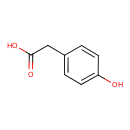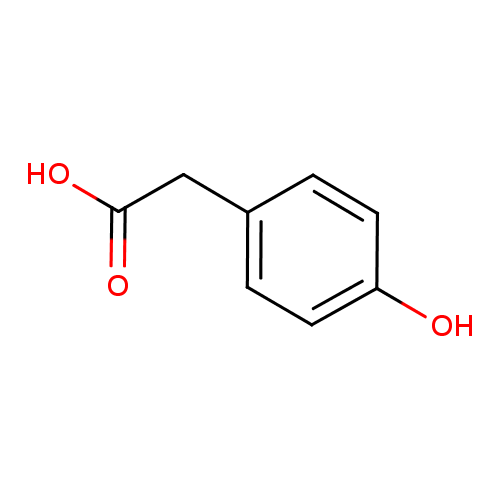| Spectra: |
| Spectrum Type | Description | Splash Key | |
|---|
| GC-MS | GC-MS Spectrum - GC-EI-TOF (Pegasus III TOF-MS system, Leco; GC 6890, Agilent Technologies) (2 TMS) | splash10-01ta-1930000000-57c9e8ddaa10569055aa | View in MoNA |
|---|
| GC-MS | GC-MS Spectrum - GC-EI-TOF (Pegasus III TOF-MS system, Leco; GC 6890, Agilent Technologies) (2 TMS) | splash10-0h01-0940000000-a14203384331e709252f | View in MoNA |
|---|
| GC-MS | GC-MS Spectrum - GC-EI-TOF (Pegasus III TOF-MS system, Leco; GC 6890, Agilent Technologies) | splash10-03fs-1930000000-80c21819072fb01958dc | View in MoNA |
|---|
| GC-MS | GC-MS Spectrum - GC-EI-TOF (Pegasus III TOF-MS system, Leco; GC 6890, Agilent Technologies) (2 TMS) | splash10-00di-9410000000-678591f03aba45c2a6ae | View in MoNA |
|---|
| GC-MS | GC-MS Spectrum - GC-MS (2 TMS) | splash10-0h0r-2940000000-760b6c506072a61059c0 | View in MoNA |
|---|
| Predicted GC-MS | Predicted GC-MS Spectrum - GC-MS | Not Available |
|---|
| LC-MS/MS | LC-MS/MS Spectrum - Quattro_QQQ 10V, Negative (Annotated) | splash10-0pb9-0900000000-e3dfb4b180d858b3a854 | View in MoNA |
|---|
| LC-MS/MS | LC-MS/MS Spectrum - Quattro_QQQ 25V, Negative (Annotated) | splash10-056r-9400000000-9a6cb39e019a0b40a666 | View in MoNA |
|---|
| LC-MS/MS | LC-MS/MS Spectrum - Quattro_QQQ 40V, Negative (Annotated) | splash10-0kdl-9400000000-35ecc22161defddc7b21 | View in MoNA |
|---|
| LC-MS/MS | LC-MS/MS Spectrum - EI-B (HITACHI M-68) , Positive | splash10-0a4i-2900000000-3939c62b0d7f649ff402 | View in MoNA |
|---|
| LC-MS/MS | LC-MS/MS Spectrum - EI-B (HITACHI M-52) , Positive | splash10-0a4i-6900000000-fdb73325a31c758496e9 | View in MoNA |
|---|
| LC-MS/MS | LC-MS/MS Spectrum - LC-ESI-QQ (API3000, Applied Biosystems) 10V, Negative | splash10-0zfr-0900000000-369a695f2c7bcf3a4a5c | View in MoNA |
|---|
| LC-MS/MS | LC-MS/MS Spectrum - LC-ESI-QQ (API3000, Applied Biosystems) 20V, Negative | splash10-0a4i-4900000000-88da569804a98e1a99ea | View in MoNA |
|---|
| LC-MS/MS | LC-MS/MS Spectrum - LC-ESI-QQ (API3000, Applied Biosystems) 30V, Negative | splash10-0a4i-9300000000-eef23e2f30d876f4a1f9 | View in MoNA |
|---|
| LC-MS/MS | LC-MS/MS Spectrum - LC-ESI-QQ (API3000, Applied Biosystems) 40V, Negative | splash10-0a4i-9000000000-0a95379b7cea57386b0b | View in MoNA |
|---|
| LC-MS/MS | LC-MS/MS Spectrum - LC-ESI-QQ (API3000, Applied Biosystems) 50V, Negative | splash10-0a4i-9000000000-dd0a48d9d6528f6a0a6a | View in MoNA |
|---|
| Predicted LC-MS/MS | Predicted LC-MS/MS Spectrum - 10V, Positive | Not Available |
|---|
| Predicted LC-MS/MS | Predicted LC-MS/MS Spectrum - 20V, Positive | Not Available |
|---|
| Predicted LC-MS/MS | Predicted LC-MS/MS Spectrum - 40V, Positive | Not Available |
|---|
| Predicted LC-MS/MS | Predicted LC-MS/MS Spectrum - 10V, Negative | Not Available |
|---|
| Predicted LC-MS/MS | Predicted LC-MS/MS Spectrum - 20V, Negative | Not Available |
|---|
| Predicted LC-MS/MS | Predicted LC-MS/MS Spectrum - 40V, Negative | Not Available |
|---|
| MS | Mass Spectrum (Electron Ionization) | splash10-0a4i-3900000000-3be1d4a7c16ea7a3eee1 | View in MoNA |
|---|
| 1D NMR | 1H NMR Spectrum | Not Available |
|---|
| 1D NMR | 13C NMR Spectrum | Not Available |
|---|
| 1D NMR | 1H NMR Spectrum | Not Available |
|---|
| 1D NMR | 1H NMR Spectrum | Not Available |
|---|
| 1D NMR | 13C NMR Spectrum | Not Available |
|---|
| 2D NMR | [1H,13C] 2D NMR Spectrum | Not Available |
|---|
|
|---|
| References: |
- Sreekumar A, Poisson LM, Rajendiran TM, Khan AP, Cao Q, Yu J, Laxman B, Mehra R, Lonigro RJ, Li Y, Nyati MK, Ahsan A, Kalyana-Sundaram S, Han B, Cao X, Byun J, Omenn GS, Ghosh D, Pennathur S, Alexander DC, Berger A, Shuster JR, Wei JT, Varambally S, Beecher C, Chinnaiyan AM: Metabolomic profiles delineate potential role for sarcosine in prostate cancer progression. Nature. 2009 Feb 12;457(7231):910-4. [19212411 ]
- Hirota S, Takahama U, Ly TN, Yamauchi R: Quercetin-dependent inhibition of nitration induced by peroxidase/H2O2/nitrite systems in human saliva and characterization of an oxidation product of quercetin formed during the inhibition. J Agric Food Chem. 2005 May 4;53(9):3265-72. [15853358 ]
- Takahama U, Oniki T, Murata H: The presence of 4-hydroxyphenylacetic acid in human saliva and the possibility of its nitration by salivary nitrite in the stomach. FEBS Lett. 2002 May 8;518(1-3):116-8. [11997029 ]
- Kobayashi K, Koide Y, Shohmori T: Determination of p-hydroxyphenylacetic acid in cerebrospinal fluid by high-performance liquid chromatography with electrochemical detection. Clin Chim Acta. 1982 Aug 4;123(1-2):161-8. [7116636 ]
- Tyce GM, Stockard J, Sharpless NS, Muenter MD: Excretion of amines and their metabolites by two patients in hepatic coma treated with L-dopa. Clin Pharmacol Ther. 1983 Sep;34(3):390-8. [6883916 ]
- Young SN, Davis BA, Gauthier S: Precursors and metabolites of phenylethylamine, m and p-tyramine and tryptamine in human lumbar and cisternal cerebrospinal fluid. J Neurol Neurosurg Psychiatry. 1982 Jul;45(7):633-9. [6181210 ]
- Boulat O, Gradwohl M, Matos V, Guignard JP, Bachmann C: Organic acids in the second morning urine in a healthy Swiss paediatric population. Clin Chem Lab Med. 2003 Dec;41(12):1642-58. [14708889 ]
- Muskiet FA, Groen A: Urinary excretion of conjugated homovanillic acid, 3,4-dihydroxyphenylacetic acid, p-hydroxyphenylacetic acid, and vanillic acid by persons on their usual diet and patients with neuroblastoma. Clin Chem. 1979 Jul;25(7):1281-4. [455649 ]
- Guneral F, Bachmann C: Age-related reference values for urinary organic acids in a healthy Turkish pediatric population. Clin Chem. 1994 Jun;40(6):862-6. [8087979 ]
- McKibbin B, O'Gorman L, Duckworth T: Catecholamine metabolite excretion in spina bifida. J Clin Pathol. 1969 Nov;22(6):687-9. [4903899 ]
- Mani AR, Pannala AS, Orie NN, Ollosson R, Harry D, Rice-Evans CA, Moore KP: Nitration of endogenous para-hydroxyphenylacetic acid and the metabolism of nitrotyrosine. Biochem J. 2003 Sep 1;374(Pt 2):521-7. [12797864 ]
- Takahama U, Hirota S, Nishioka T, Oniki T: Human salivary peroxidase-catalyzed oxidation of nitrite and nitration of salivary components 4-hydroxyphenylacetic acid and proteins. Arch Oral Biol. 2003 Oct;48(10):679-90. [12971945 ]
- Quijano C, Hernandez-Saavedra D, Castro L, McCord JM, Freeman BA, Radi R: Reaction of peroxynitrite with Mn-superoxide dismutase. Role of the metal center in decomposition kinetics and nitration. J Biol Chem. 2001 Apr 13;276(15):11631-8. Epub 2001 Jan 4. [11152462 ]
- Raw I, Schmidt BJ, Merzel J: Catecholamines and congenital pain insensitivity. Braz J Med Biol Res. 1984;17(3-4):271-9. [6085021 ]
- Jenner AM, Rafter J, Halliwell B: Human fecal water content of phenolics: the extent of colonic exposure to aromatic compounds. Free Radic Biol Med. 2005 Mar 15;38(6):763-72. [15721987 ]
|
|---|


